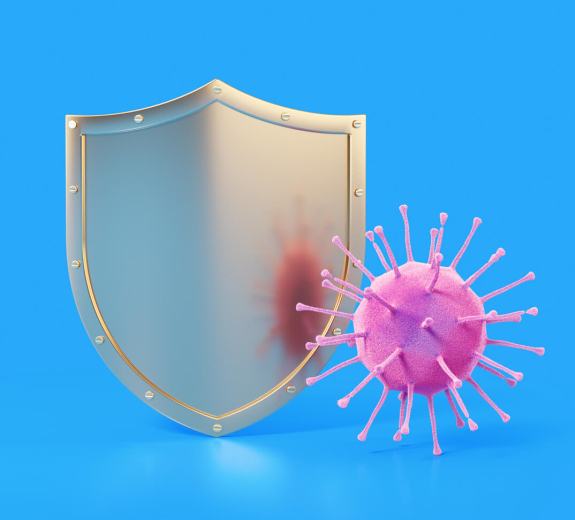How Viruses Infiltrate Cells
In the early 2010s, Dr. Lacy-Hulbert wanted to study how viruses infect cells, in hopes of finding better ways to treat them. He knew that viruses like Ebola and SARS can infiltrate some cells and make you sick — but other cells have an armor-like structure that keeps viruses from infecting them.
This prompted key questions: How do some cells armor themselves against viruses? And why do some cells have that armor, but others don’t?
Dr. Lacy-Hulbert’s team developed a process to screen millions of cells, each expressing different genes. He and his colleagues expose those cells to a virus or bacteria in a petri dish. Then the researchers single out the small number of cells that don’t get infected.
“We look at which genes are turned on in the resistant cells,” he says. “This teaches us which genes help cells resist viruses.”
Applying this approach to COVID-19 could open the door to a breakthrough treatment approach. Dr. Lacy-Hulbert plans to use his method to look for genes that help cells resist the virus.
"Once we identify those genes, we can look for medicines that activate them and potentially stop people from getting infected," he says.
Understanding Immune Response
This research won’t only help solve a pandemic — it will fuel BRI’s quest to fight other diseases caused by the immune system.
BRI’s goal is a healthy immune system for everyone. Part of that quest is to stop the immune system from attacking itself in autoimmune disease. But a healthy immune system also means an immune system that responds appropriately to viruses and bacteria.
“This is an opportunity to understand the different ways immune systems react to the same thing,” he says. “And that’s exactly what we’re trying to understand in autoimmune disease.”
Doing What You Can to Make a Difference
Like most of the world, Dr. Lacy-Hulbert is doing his best to continue his work with stay-at-home orders in place. While he’s developing new studies for COVID-19, his wife, Lynda Stuart, MD, PhD, is working around the clock to develop a vaccine for the virus at the Bill and Melinda Gates Foundation. This often means Dr. Lacy-Hulbert is juggling his science with supporting his two young daughters, while fielding frequent interruptions from their labradoodle.
“I’m switching between research proposals for COVID-19, to papers on autoimmunity — then to fourth grade math homework, and ‘Dad, can you fix the printer?’ and back again,” he says.
Drs. Lacy-Hulbert and Stuart have spent a lot of time explaining what’s going on in the world to their kids. Their take-home message is much simpler than the science they do.
“We hope they learn that when a big problem arises, you should always do what you can to confront it, and to make a difference — that’s just the right thing to do,” Dr. Lacy-Hulbert says.




